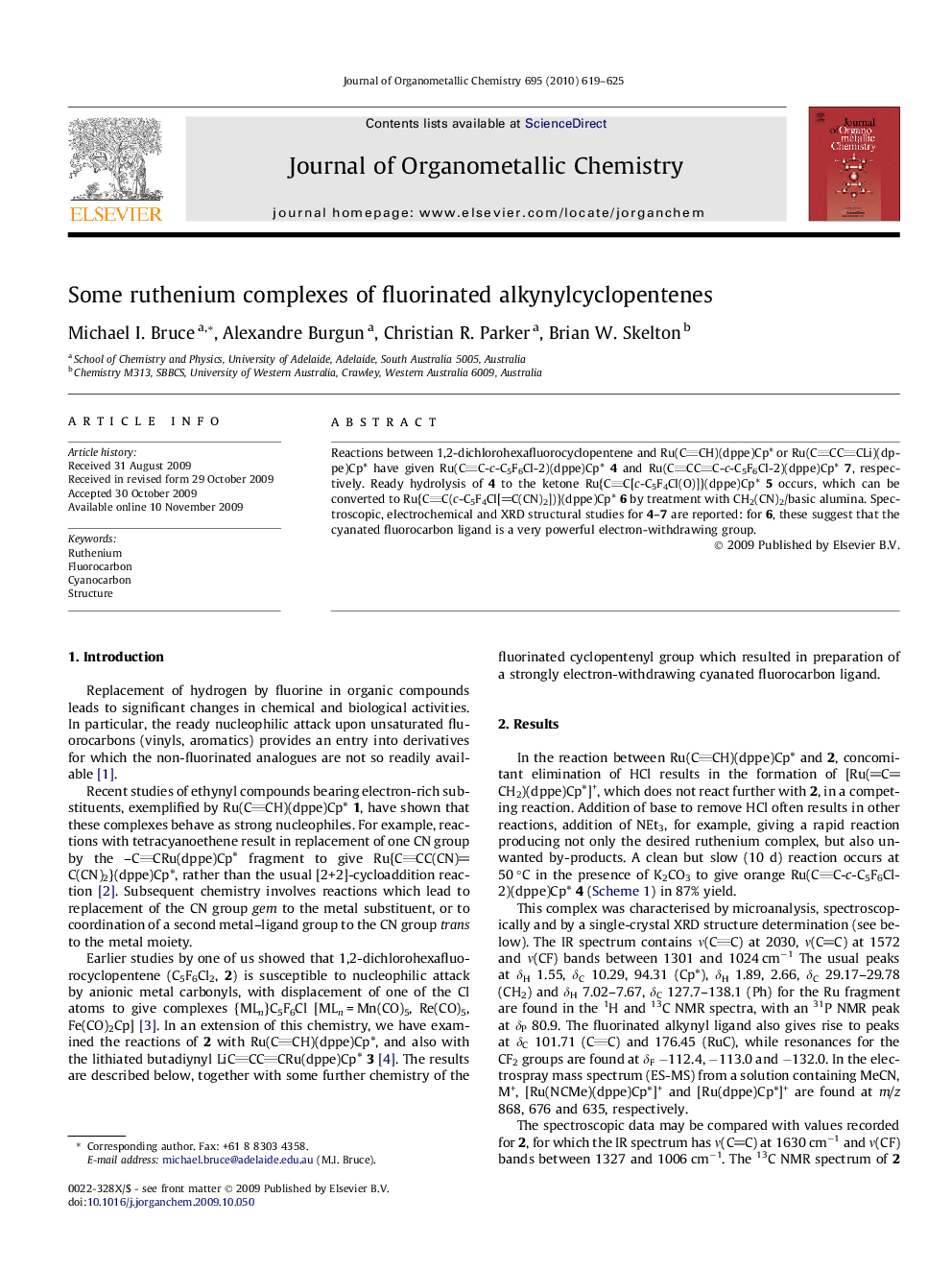| Article ID | Journal | Published Year | Pages | File Type |
|---|---|---|---|---|
| 1325978 | Journal of Organometallic Chemistry | 2010 | 7 Pages |
Reactions between 1,2-dichlorohexafluorocyclopentene and Ru(CCH)(dppe)Cp∗ or Ru(CCCCLi)(dppe)Cp∗ have given Ru(CC-c-C5F6Cl-2)(dppe)Cp∗ 4 and Ru(CCCC-c-C5F6Cl-2)(dppe)Cp∗ 7, respectively. Ready hydrolysis of 4 to the ketone Ru{CC[c-C5F4Cl(O)]}(dppe)Cp∗ 5 occurs, which can be converted to Ru{CC(c-C5F4Cl[C(CN)2])}(dppe)Cp∗ 6 by treatment with CH2(CN)2/basic alumina. Spectroscopic, electrochemical and XRD structural studies for 4–7 are reported: for 6, these suggest that the cyanated fluorocarbon ligand is a very powerful electron-withdrawing group.
Graphical abstractReactions between 1,2-dichlorohexafluorocyclopentene and Ru(CCH)(dppe)Cp∗ or Ru(CCCCLi)(dppe)Cp∗ have given Ru(CC-c-C5F6Cl-2)(dppe)Cp∗ 4 and Ru(CCCC-c-C5F6Cl-2)(dppe)Cp∗ 7, respectively. Ready hydrolysis of 4 to Ru{CC[c-C5F4Cl(O)]}(dppe)Cp∗ 5 occurs, which can be converted to Ru{CC(c-C5F4Cl[C(CN)2])}(dppe)Cp∗ 6 by treatment with CH2(CN)2/basic alumina. Spectroscopic, electrochemical and XRD structural studies for 4–7 are reported: the cyanated fluorocarbon ligand in 6 is a very powerful electron-withdrawing group.Figure optionsDownload full-size imageDownload as PowerPoint slide
